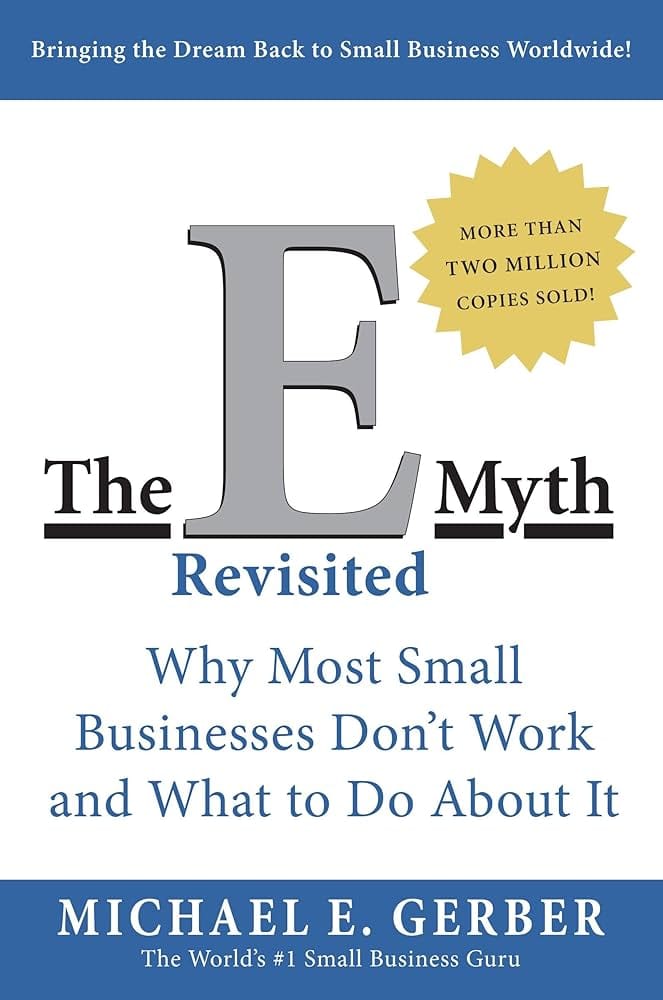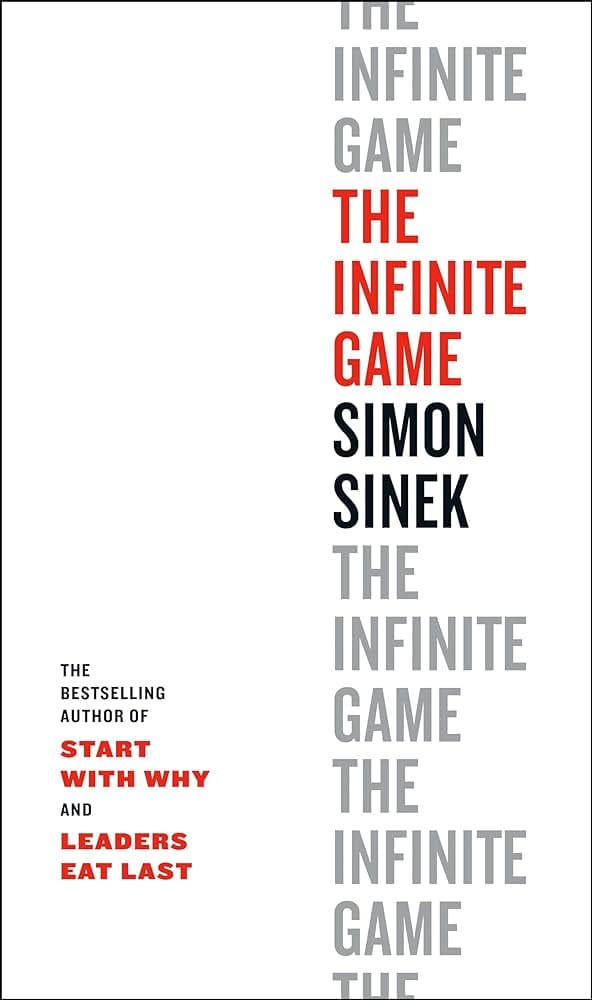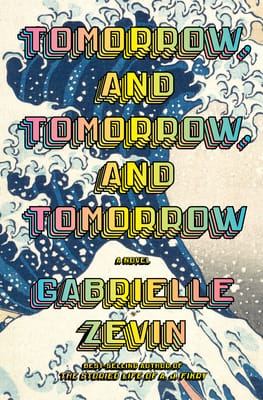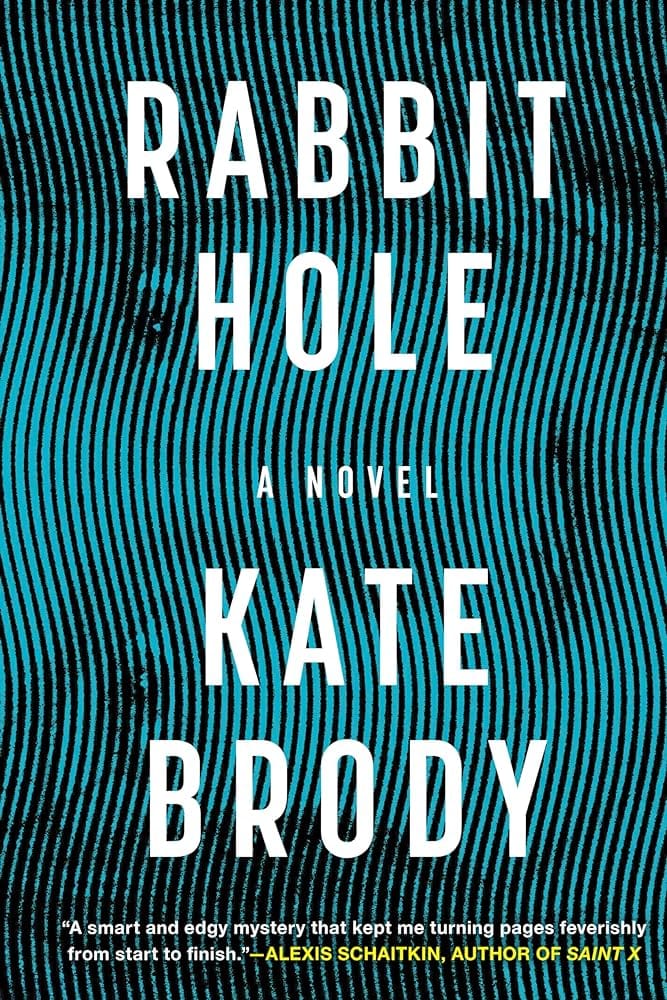
E-Myth Revisited
The E-Myth Revisited teaches entrepreneurs to work "on" their business rather than just "in" it, emphasizing systematic approaches that allow the business to operate independently of its owner. The book shows how to create a business that serves your life goals instead of consuming them.
buy this book💭 The book in 3 sentences
- “The purpose of your life is not to serve your business. The primary purpose of your business is to serve your life.” This is an idea that many small businesses lack understanding of when they first start. (It’s something that I am currently learning as well). What’s the point in starting a business if you don’t have a goal that you’re trying to get that business to help you reach?
- “Great businesses are not built by extraordinary people, but by ordinary people doing extraordinary things.” We all think at some point that we need to hire highly skilled people to help us build our small business. The truth is, what you need are dedicated people, not necessarily highly skilled. You need people who believe in your vision and purpose, and are willing to roll up their sleeves to help you achieve it.
- We all have 3 roles that we have to play when building any business. The Entrepreneur who lives in the future. Who plans and dreams. Who thinks of the big ideas. Who figures out how to grow the business. The Manager who takes those dreams and builds systems from it. Who understands what those dreams look like in quantifiable numbers. Who loves to organize. And lastly, the Technician who cares all about execution. Who works hard day in, day out because they love doing the work. Most small businesses get stuck as just the technician. They think it’s all about doing the work. You really need to balance being all 3. That’s how a successful business is built.
👀 Impressions
This book solidified the fact that everything you do needs to have purpose. And not just a company purpose, mission, and vision. Your own life purpose. The direction and making of your business depends heavily on your values, virtues, and purpose (as it should), and there are steps you can take to play all 3 necessary roles as a business owner so that you can create a successful small business.
👥 Who should read it?
E-Myth Revisited is perfect for anyone who has been thinking about starting a small business (or already has one). It really is a foundational book that teaches you a critical mindset to adopt when building the foundations of a business.
Read this book if you are
- considering starting a business (or already have one)
- wondering how a business can affect your life
- wondering how to structure a business
- unclear about the organizational systems it takes to run a business
- need some entrepreneurial inspiration
🚀 Actionable takeaways
- Understand the 3 roles (Entrepreneur, Manager, Technician). Evaluate what role you currently play the most and what roles you haven’t made time for.
- Start with your Primary Aim. This should be the foundation on which your business is built. Remember, your business is meant to serve your life, not the other way around.
- Create your strategic objective. This is a clear statement of what your business has to ultimately do for you to achieve your primary aim. This is not your business plan, it is a product of your life plan.
- Lay out the structure of your organization at the start. Although you currently fill every role stated, it’s important you define the rules and create manuals and systems for each role so that you know how you can start hiring.
- You have to believe in your plan. Why would anyone else play your game and follow your plan if you don’t?
- Play to your customers unconscious mind. Understand the demographics of your customers deeply so that you can understand why they buy (aka their psychographics).
- Find that perceived need and fill it. If your customer doesn’t perceive he needs something, he doesn’t. Even if he actually does.
🗣️ Favourite quotes
What must our business be in the mind of our customers in order for them to choose us over everyone else?
The purpose of your life is not to serve your business. The primary purpose of your business is to serve your life.
Great businesses are not built by extraordinary people, but by ordinary people doing extraordinary things.
The difference between creativity and innovation is creativity thinks up new things and innovation gets those things done.
Continuous improvement for its own sake is a waste of time.
The difference between a warrior and an ordinary man is that a warrior sees everything as a challenge and an ordinary man sees everything as a blessing or curse.
Your business is the means rather than the end. It’s a vehicle to enrich your life rather than drain it.
The most menial work can be a piece of art when done by an artist
The business is a place where everything we know how to do is tested by everything we don’t know how to do. The conflict between the two is what creates growth and fosters meaning.
The system produces the results. The people manage the system.
✏️ Summary + Notes
What is the Entrepreneurial Myth?
The fatal assumption of being an Entrepreneur is that if you understand the technical work of a business, you understand a business that does that technical work.
The truth is in each business, there are 3 key roles that we have to play as the business owner.
The 3 roles
As business owners, we must each play 3 roles. The Entrepreneur, the Manager, and the Technician.
The Entrepreneur
- lives in the future
- happiest constructing what ifs
- creative personality
- creates a great deal of havoc around him
The Manager
- pragmatic
- planning
- order
- predictability
- lives in the past
- craves order
- clings to status quo
- creates neat, orderly rows of things
- entrepreneur creates, manager organizes
Technician
- the doer
- lives in present
- wants to control the work flow
- ruminates
- entrepreneur creates work for the technician to do and manager to organize
Most business owners only play the role of the Technician. They believe that as long as they do the work, they will succeed. This is far from the truth. How will our business grow when we don’t play the Entrepreneur and continue to dream big for our business? How will our business succeed when we don’t play the Manager and create system in which the business operates?
There is a common path that a lot of small businesses get stuck in. They start in infancy, in which it’s just them, the Technician. They work and work and work until the business has grown to a place where they need to hire help. Then they move to adolescence where they hire 1-2 people to help. Things seem to go well. The business is growing.
However, at some point in your adolescence, you will realize that the businesses is spinning out of your control. You don’t have control of your people, deadlines are missed, you don’t understand how it got so bad. So you downsize. You go back to just you. You can’t figure out how to move forward.
This isn’t the only path for a business. Your goal is to become a mature business. But you don’t need to go down the infancy > adolescence phase. Mature businesses know how it got to where it was, and what it must do to get where it needs to go. It’s not an inevitable result of the other two phases.
Start with maturity in mind. Have a clear picture of what the company would look like when it’s done. Act that way from the very beginning.
The Turn-Key Revolution: A New View of Business
If you think about some of the most successful businesses in the world, how did they get to where they are? McDonald’s didn’t grow to where it is through a messy growth through phases. That’s the key to business franchises—a clean and organized system. Business franchises don’t just lend it’s name, it provides an entire system of how to do business.
Most business founders believe that the success of a business resides in the success of the product it sells. The truth is, the TRUE product is not what it sells, but how it sells it. Your goals is to create a systems-dependent business, not a people-dependent business.
The key thing to remember here is that your business is not your life.
the purpose of your life is not to serve your business but the primary purpose of your business is to serve your life
Rules of the Franchise Game
- The model will provide consistent value to your customers, employees, suppliers, and lenders, beyond what they expect
- value being what people perceive and nothing more
- The model will be operated by people with the lowest possible level of skill
- for ordinary people to do extraordinary things, there must be a system
- The model will stand out as a place of impeccable order
- All work in the model will be documented in operations manuals
- The model will provide a uniformly predictable service to the customer
- The model will utilize a uniform color, dress, and facilities code
Even if you’re not planning on turning your business into a franchise, you need to build your business as if it is one.
Ask yourself these questions:
- how can I get my business to work but without me
- how can I get my people to work but without my constant interference
- how can I systematize my busiens sin such a way that it could be replicated 5000 times so the 5000th unit would run as smoothly as the first
- how can I own my business and still be free of it
- how can I spend my time doing the work I love to do rather than the work I have to do?
The problem is not your business. The problem is you (it always has been).
The Business Development Program
There are 7 distinct parts of the business development program:
- Primary Aim
- Strategic Objective
- Organizational Strategy
- Management Strategy
- People Strategy
- Marketing Strategy
- Systems Strategy
Primary Aim
If you’re telling the life of your story at your funeral, how would that sound? that’s your Primary Aim. Questions to ask yourself:
- what do i wish my life to look like
- how do i wish my life to be on the day to day
- What would I like to be able to say I truly know in my life, about my life
- how would I like to be with other people in my life
- how would I like ppl to think about me
- what would I like to be doing 2 years from now? 10 years? 20 years? when I’m dying?
- what specifically would I like to learn during my life
- spiritually
- physically
- financially
- technically
- intellectually
- about relationships?
- how much money will I need to do the things I wish to do? by when will I need it?
Strategic Objective
Once you have a picture of what your life wants to believe, you will start to realize that it’s more than just things to have and things to do. It’s about who you want to be and the things that are the most important to your life. Your business then becomes the thing that will help you accomplish those goals.
Your strategic objective should be a clear statement of what your business has to ultimate do for you to achieve your primary aim. It is not just your business plan. It’s a product of your life plan.
Some standards of your strategic objective to consider:
- Money
- how big is your vision?
- how big will your company be when it’s finally done?
- any standards are better than no standards, just pick a number
- what will serve my primary aim?
- how much money do I need to live the way I wish?
- An opportunity worth pursuing
- a business that can fulfill the financial standards you’ve created for your Primary Aim and your Strategic Objective
- Does the business I have in mind alleviate a frustration experienced by a large enough group of consumers to make it worth my while?
- The commodity is the thing your customer actually walks out with in his hand
- The product is what your customer feels as he walks out of your business
- Determine if it’s worth pursuing by seeing how may selling opportunities you have (your customers’ demographic) and how successfully you can satisfy the emotional or perceived needs lurking there (customers’ psychographics)
- Other questions to ask
- when is your Prototype going to be completed?
- where are you going to be in business?
- how are you going to be in business? (retail, wholesale, combo?)
- what standards are you going to insist upon regarding reporting, cleanliness, clothing, management, hiring, firing, training, and so forth?
Organizational Strategy
Here is where you will map out the org chart of your business (aka the roles of the people in your business) and what it will look like once it’s mature and successful. Some role examples are:
- President & COO: accountable for overall achievement of Strategic Objective and reporting to the Shareholders
- Vice-President/Marketing: finding new customers and finding new ways to provide customers with the satisfaction they derive from widgets
- Vice-President/Operations: keeping customers by delivering to them what is promised by Marketing and for discovering new ways of assembling widgets
- Vice-President/Finance: accountable for supporting both marketing and ops in the fulfillment of their accountabilities by achieving the company’s profitability standars, and by securing capital when needed
- Sales Manager & Advertising/Research Manager: reports to Vice-President/Marketing
- Production Manager, Service Manager, and Facilities Manager: reports to Vice-President/Operations
- Accounts Receivable Manager and Accounts Payable Manager: reports to Vice-President/Finance
Map out the roles in a family-tree like diagram with the top roles at the top and then working your way down. Put your name under each of the roles for now because as a small business owner, you are probably the one accomplishing each of these roles.
Next, create Position Contracts for each of these roles. This provides sense of commitment and accountability.
The Contracts should include
- summary of results to be achieved by each position
- the work they are accountable for
- list of standards the results are evaluated
- line for signature
Sign each of these contracts because YOU need to be committed to fulfill each of these roles.
Once this is done, then it’s time to prototype each position by replacing yourself with a system at each level. Start at the bottom of the organization, not the top. Start by thinking about everything you already do in each role. Then create manuals for each of the roles. For example, what do you currently do as the Accounts Receivable Manager and Accounts Payable Manager? How do you invoice? How do you collect payment? How do you keep track of bills?
The most important step in freeing yourself from the technical work is by replacing yourself with a system and then handing that system to someone to work on. The system produces the results. The people manage the system.
Once you’re ready to hire again, hire from the bottom (only after you’ve created Operation Manuals) and then teach them how to follow the system.
Management System
The point of your management system is to orchestrate the process by which management decisions are made while eliminating the need for such decisions wherever and whenever possible. This system is designed to produce a marketing result. The marketing result being fulfilling the perceived need of your customer demographic.
Create a checklist of how to do each and everything while maintaining the best possible experience for the customer and fulfilling their perceived need.
People Strategy
If you want it done, you’re going to have to create an environment in which ‘doing it’ is more important to your people than not doing it. Where ‘doing it’ becomes a way of life.
How you do one thing is how you do everything. This has to be what your people believe. If their work is sloppy, could it be because they are sloppy internally? If they are bored, could it be because they are bored internally? There is no such thing as undesirable work, only people who see certain kinds of work as undesirable.
That’s why it’s so important to define the purpose of your business and live and breathe your system. When you hire, you need to hire people who are excited to play the game. Who believe in your business’ purpose are happy and willing to fill those roles.
The very best businesses represent to the people who create them: a game to be played in which the rules symbolize the idea you, the owner, have about the world. If your idea is a positive one, your business will reflect that optimism. If your idea is a negative one, your business will reflect that as well.
Your people strategy is the way you communicate this idea.
Marketing Strategy
Your marketing strategy starts, ends, lives, and dies with your customer. It’s not just about thinking what your customer’s conscious mind wants. It’s about thinking of what your customer’s unconscious mind wants.
Their unconscious mind takes in the smells and senses of your business. The colors you wear, and how that affects them. The kindness of your people. The overall experience they have that help them make a decision about whether your business is one they want to support.
To understand your customer you first need to understand what their demographic is. Find out everything about it. What they do, how much they make, what kind of brands they like, what they were, where they consume media…everything.
By understanding who your customer is (aka their demographic), you can then understand why they buy (aka their psychographic). These two things are what will allow you to satisfy their unconscious mind as well as their perceived need. Find the perceived need and fill it.
Because if your customer doesn’t perceive he needs something, he doesn’t, even if he actually does.
The customer you’ve got is one hell of a lot less expensive to sell to than the customer you don’t have yet.
Ask for feedback, be a human, get to know your customers.
Systems Strategy
A system is a set of things, actions, ideas, and information that interact with each other, and in so doing, later other systems.
There are 3 kinds of systems:
Hard systems
For example using whiteboards in meetings, the color of uniforms, the color of your walls.
Soft systems
For example, a selling system. Or a marketing system. Remember, by doing it the same way every time, you need to have a selling system not just a selling person.
Information systems
Interacts with the soft system. It’s how you measure. For example, an information system for the selling system would provide:
- how many calls were made
- how many prospects were reached
- how many appointments were scheduled
- how many appointments were confirmed
- how many appointments were held
- how many assessments were made
- etc.
Aka Hard systems are things, soft systems are ideas, and information systems are information. They are completely intertwined and you need all 3 for a successful business.
The E-Myth Revisited emphasizes that a successful business requires a delicate balance between systems, people, and vision, where the owner must work ON the business rather than IN it.
By creating detailed systems and processes that can run without the owner's constant presence, entrepreneurs can build a business that serves their life rather than consuming it.
Ultimately, the key to building a successful business lies not in being an extraordinary person, but in creating extraordinary systems that ordinary people can follow to produce consistent, exceptional results.
If you enjoyed my insights on The E-Myth Revisited by Michael E. Gerber, consider signing up for our newsletter and getting more book insights sent straight to your email inbox.
Or if you enjoy watching videos on book insights, check out my Book Club playlist.




